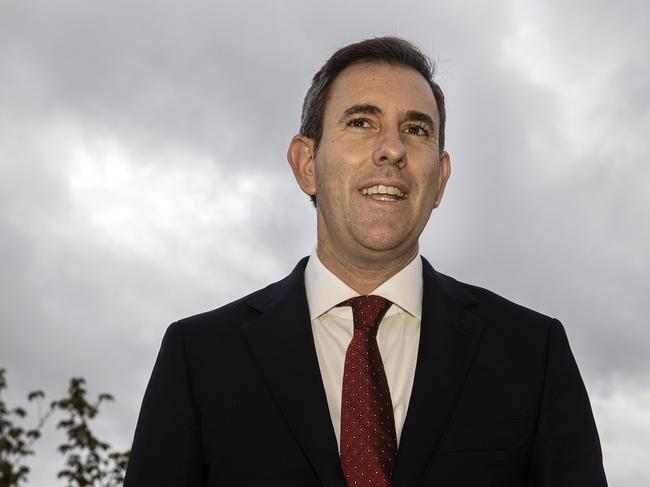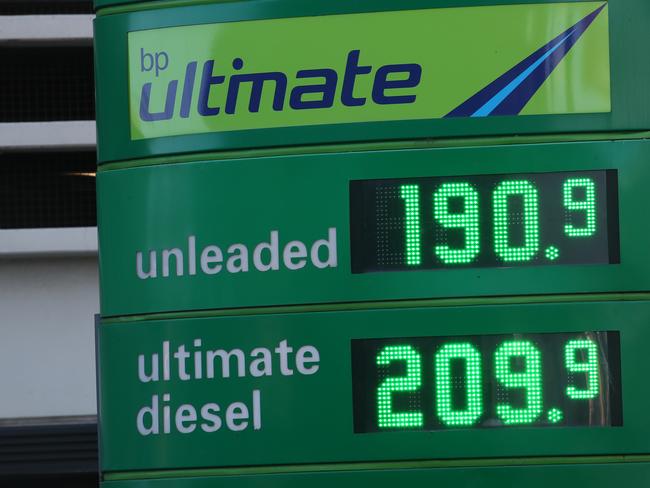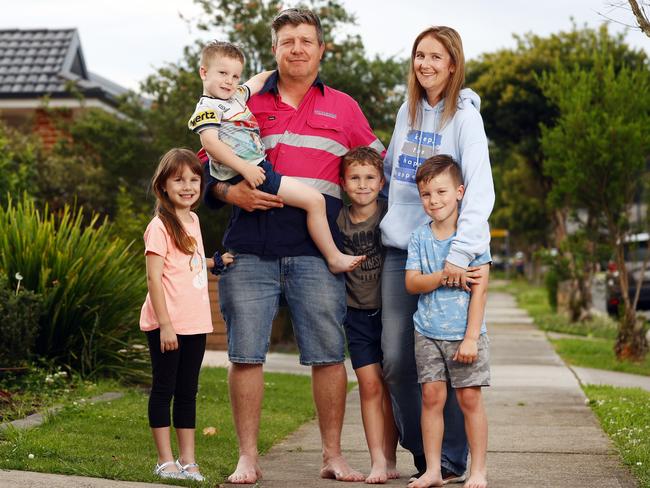Federal Budget 2022: ‘Hard days to come’: Chalmers’ budget charts cautious course
Jim Chalmers has delivered a five-point plan for Aussie families: cheaper childcare, more paid parental leave, cheaper medicines, more affordable housing, and reform to get wages moving.

NSW
Don't miss out on the headlines from NSW. Followed categories will be added to My News.
Treasurer Jim Chalmers handed down Labor’s first budget in a decade Thursday night, steering a cautious course between cost of living relief, global economic headwinds, and his own government’s commitment to net zero.
Warning that there are “hard days to come, and hard decisions to accompany them,” Mr Chalmers offered up a modest cost of living package centred around a five point plan for cheaper childcare, more paid parental leave, cheaper medicines, more affordable housing, and reforms to get wages moving.
Mr Chalmers also promised more investment in skills training with nearly half a million fee-free TAFE and vocational training places, greater disaster resilience, and $15bn in “targeted investments” to nurture the country’s industrial base.
There was also a commitment to more funding for the regions, moneys to help improve farming output and sustainability, and billions in low interest financing for projects to upgrade the electricity grid as part of the transition to renewables.
But underlying the government’s plan were Treasury numbers predicting choppy waters for the foreseeable future.

These include an official prediction that will see inflation peak this year at 6.1 per cent before declining to 5.75 per cent in 2023-24.
That same year unemployment is expected to peak at 4.5 per cent and GDP growth is predicted to bottom out at 1.5 per cent.

Mr Chalmer’s spending plans will have to compete with everything from NDIS cost blowouts to rising interest payments on the nation’s net debt — which is expected to top three-quarters of a trillion dollars in 2025-26.
But these assumptions may prove to be heroic, given a global economic situation that includes ongoing war in Europe, a shaky Chinese economy, and a US Federal Reserve that is determined to keep hiking interest rates until it brings that country’s inflation under control, even at the price of recession.
Among the biggest new spends announced by the Treasurer was $20bn of low cost finance to help upgrade the nation’s power grid and get renewable energy to consumers quickly in the face of a push for higher electric vehicle uptake.
Those looking to buy an EV will benefit from a $345 million spend exempting eligible cars and trucks from import tariffs and fringe benefit taxes.
Yet despite wanting more Australians to buy EVs, budget papers also reveal the government is expecting petrol and diesel excise tax receipts to climb through at least 2025-26.
There was also a promise of more affordable housing, though construction not only has to catch up with a shortfall of 11,000 homes per year in Sydney alone but also compete with the government’s plan to increased skilled migration to 195,000 per year.
While claiming that the push to renewables will lead to “cleaner, cheaper, more reliable energy” most other Australians will have to wait to see the dividends.
Despite promising as recently as June that “cost of living will be central to the October budget,” those without small children, health issues, housing stress, or on the minimum wage will be left waiting for years for power prices to come down after having seen 25 per cent increases this year with more to come in 2023.
However those with small children like Jordan Springs couple Donna and Stuart Pritchard and their four kids are likely to feel some benefit from Mr Chalmer’s promise of increased child care benefits including a lift in Child Care Subsidy rates.

Mrs Pritchard said her partner, a diesel engineer, has moved to Perth for a fly in fly out (FIFO) role to allow the kids to enrol in extra-curricular activities.
The couple share four kids, Charlie, 7, five-year-old twins Lucie and Alfie and Freddie, 3.
“We knew the kids were starting kindy this year. School trips, extra-curricular activities, trips cost money and we just couldn‘t afford to do it without him going away,” she said.
“My partner is a diesel mechanic so he works in the gold mines in Perth. He works for 5 weeks and he is home for five days.
“Three kids into footy it cost us like $450 all up.”
Mrs Pritchard said the rising cost of living was driving up the cost of everything from groceries, to petrol and school uniforms.
“I have to buy Coles only stuff and I find I‘m buying a lot of home brand stuff. I get things like my fruit and veg delivered from a local company that gets it from the farmers because its cheaper and my meat, I buy a big bulk lot every few months,” she said.
“We moved our son from a school from Penrith when we moved to Jamisontown because it was costing us $150 a week in fuel back then. I hate to think what it would be now.
Mrs Pritchard would like more support from the federal government for going back to work.
“I would like more support for going back to work. I only work one day a week … and I do any extra shifts if I can cover them but I‘m limited because of school and daycare and paying for after school care for two days.”



